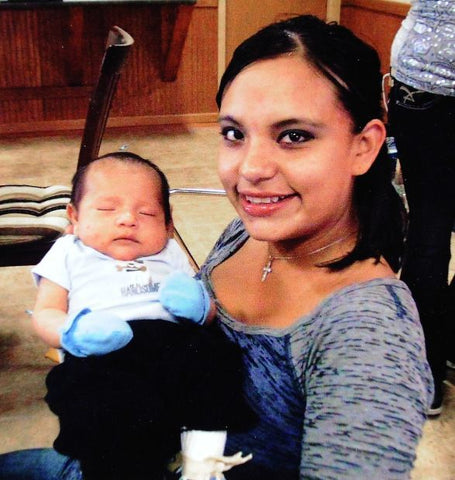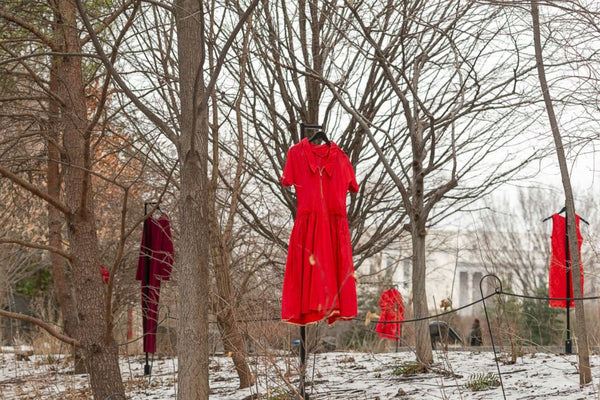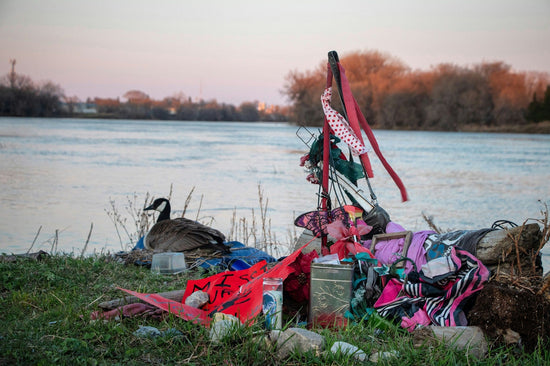Content warning: racialized violence, sexual assault.
Updated and republished on May 1, 2024 by Sophie Swan. Includes original content written by Peach Ingridsdotter in May 2021.
* * *
Indigenous people in North America experience the highest rates of violence of any group, yet violent crimes across the US and Canada repeatedly target Indigenous women, girls, and gender-expansive people. According to the Indian Law Resource Center, “more than 4 in 5 American Indian and Alaska Native women have experienced violence, and more than 1 in 2 have experienced sexual violence.”
In their 2018 report, the Urban Indian Health Institute found that 5,712 Indigenous people were reported missing in 2016, whereas the DOJ had only logged 116 cases. They also reported murder as the third leading cause of death among Native women.
Domestic and dating violence, stalking, sexual assault, homicide, and sex trafficking disproportionately impact Indigenous lives. Nonprofit organization Native Hope says it best: “Native women and girls are being taken or murdered at an unrelenting rate.”
This horrifying and heartbreaking epidemic has given rise to the Missing and Murdered Indigenous Women (MMIW) movement, an initiative dedicated to raising awareness around the silent epidemic, restoring justice to affected Indigenous people, families, and communities, and advocating for an end to violence against Indigenous women and people.
In honor of MMIW Awareness Day (May 5), we want to spotlight a few details about this crisis, why it’s an intersectional issue, and a few things you can do to help.
Header image: Makeshift memorial to Tina Fontaine, one of hundreds of Indigenous women and girls murdered or missing in Canada. Photo by Matthew TenBruggencate.
The MMIW Crisis

Hanna Harris and her 10 month old son
May 5 is Hanna Harris's birthday. She was 21 in the summer of 2013, when she went out one evening and never came home. Authorities were slow to respond to reports that she had gone missing, and it was not police but a community-organized search party that found Hanna's body four days later, too decomposed to determine cause of death.
Delays like this are not uncommon when crimes against Native people are committed on reservations by non-Natives, and justice has long been frustrated by the tribes' legal inability to prosecute on their own land. Once out of the Indigenous hands, crucial evidence tends to get lost, and cases often go cold. (It also just so happens that Indigenous people are more likely to be killed by police than any other minority group.)
According to the CDC, homicide is the third leading cause of death for Indigenous women in the U.S., and the majority of these murders are committed by non-Native people, on Native land. In 2016, the National Institute of Justice Report stated that Native women are 1.7 times more likely to experience violence than white women, and twice as likely to be raped. The majority of their assailants are non-Native.
The results of a national inquiry in Canada revealed that in the past three decades, Indigenous women made up 16% of all female homicides, despite representing only 4% of the nation's female population. Similarly, the murder rate of Native women is three times higher than white women in the United States. Overall, it's ten times higher than the national average.
Intersectional Justice for MMIW

The lack of urgency and attention to violence against Indigenous people has necessitated the organization of a mass movement coordinated by Native American and First Nations communities. MMIW is working to bring awareness to the problem, to locate Indigenous people who have gone missing, to support victims' families, and to ensure safety, security, and sovereignty for future generations. Ongoing efforts involve amplifying Indigenous voices, instilling cultural pride through education and preservation of language and culture, and training vulnerable groups in self-defense.
Their mission, like countless other Indigenous nonprofit organizations, aligns with the broader 'Land Back' movement that has existed for generations. Since NDN Collective launched a LANDBACK campaign in 2020, the movement has taken on a more official form.
This project seeks to reclaim what has been taken from Indigenous people, including their own languages, ceremonies, medicine, sovereignty, sacred places, and symbiotic relationship with the land. Land Back is dedicated to climate justice, to conservation and stewardship, to the voices of youth who represent the future, and to the collective liberation of all oppressed people groups.
Change is incremental, but victories are being won. For instance, a 2020 court ruling determined that much of Eastern Oklahoma falls within the Muscogee (Creek) Nation's reservation, granting the tribe the right to handle prosecution of crimes on the land. This is a very meaningful win, and sets an important precedent for sovereignty.
Hanna's birthday now marks the National Day of Awareness for Missing and Murdered Indigenous Women. She would have been 32 this year. In her honor, a bill called Hanna's Act was passed in 2019, creating a position within the state Justice Department meant to expedite the search and recovery of missing people in her home state of Montana.
What You Can Do for MMIW Justice

The REDress Project installation by artist Jaime Black
We at Sea Witch Botanicals stand unequivocally with Indigenous peoples and support their inalienable rights to safety, sovereignty, dignity, and the preservation of their cultures. We encourage you to join in with us by taking the actions outlined below.





